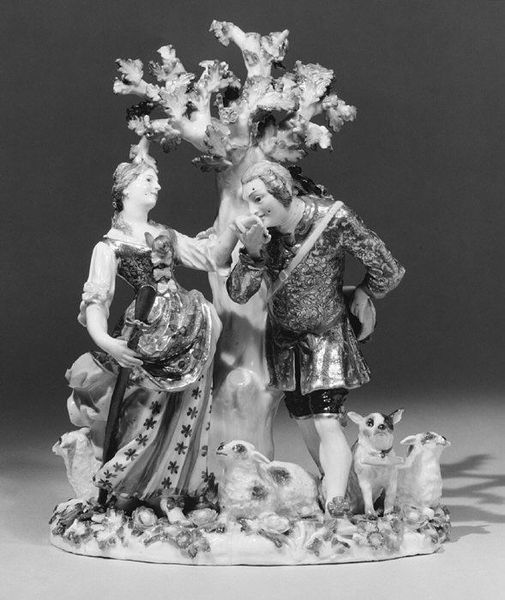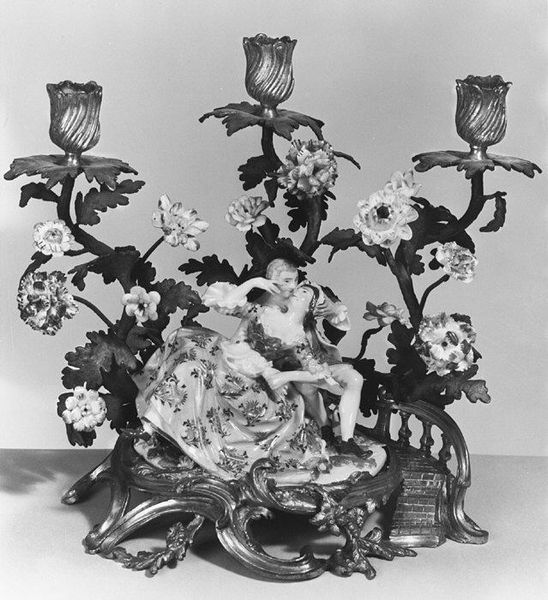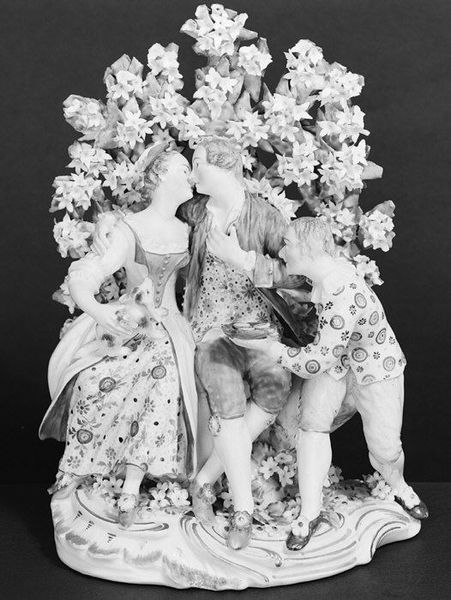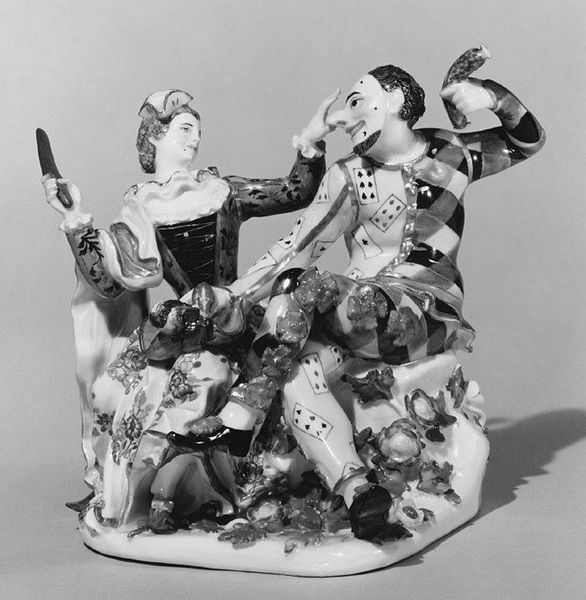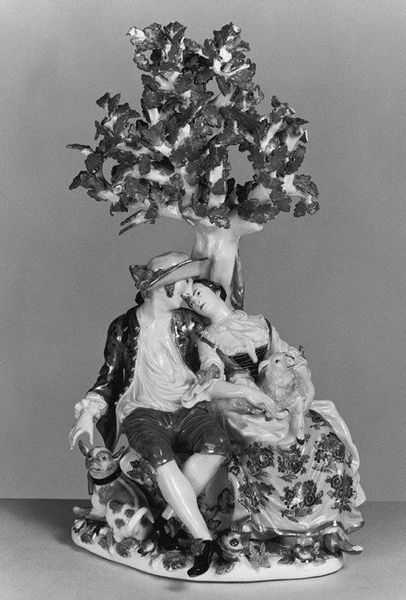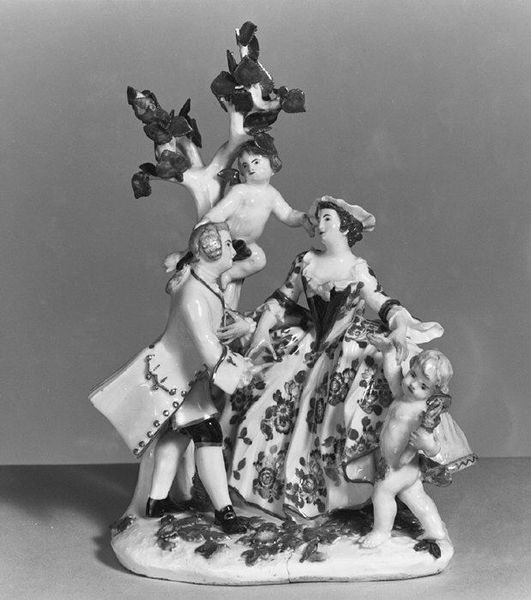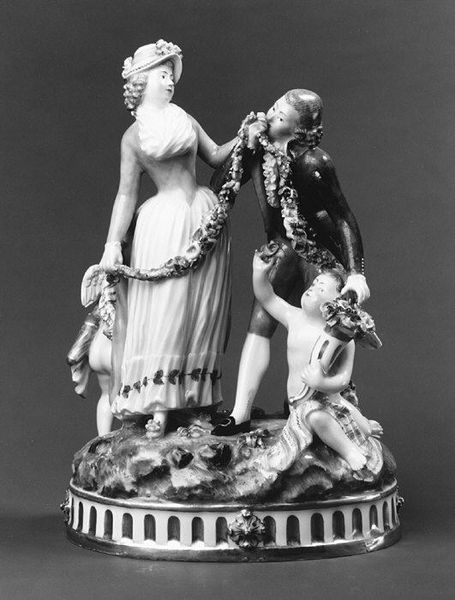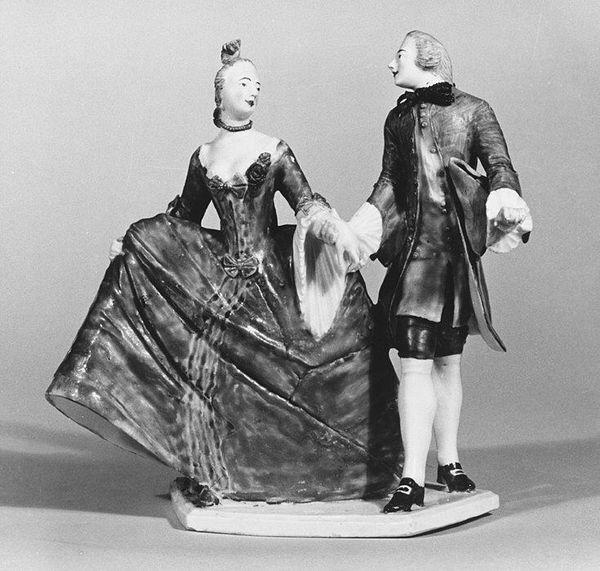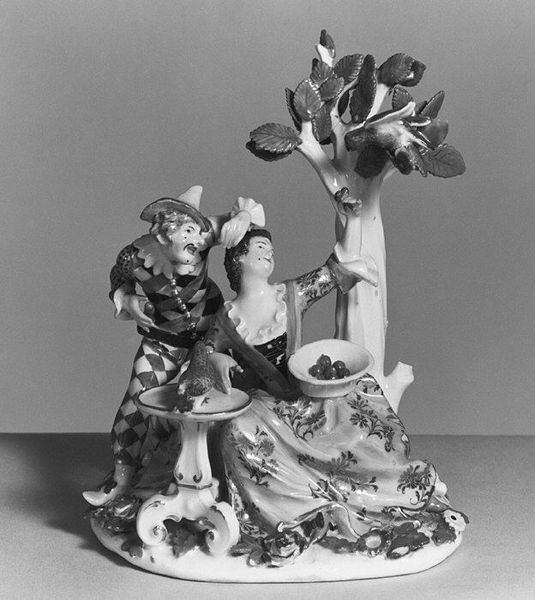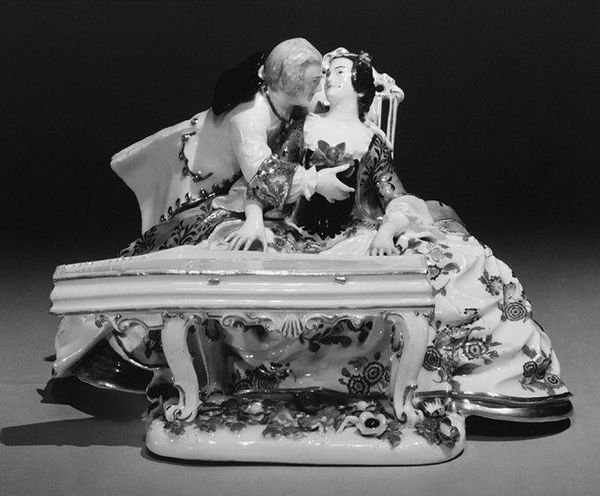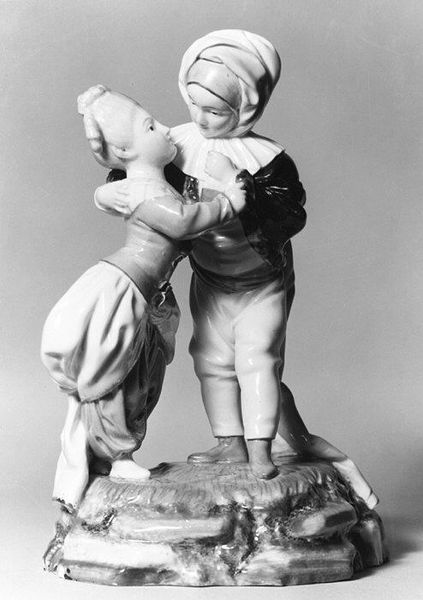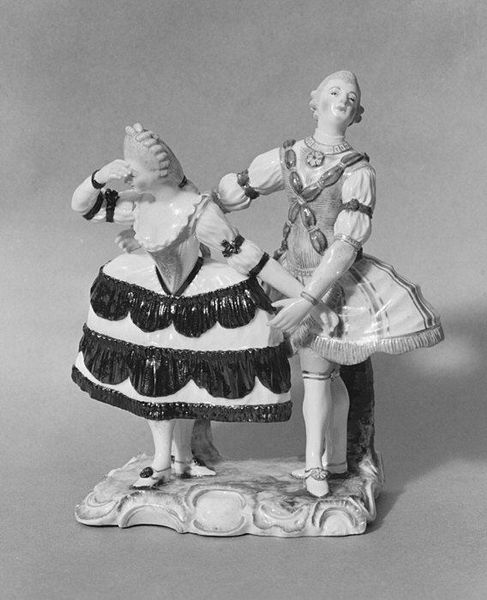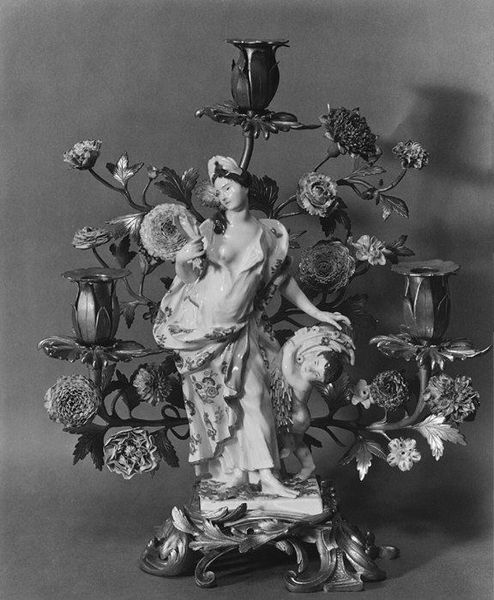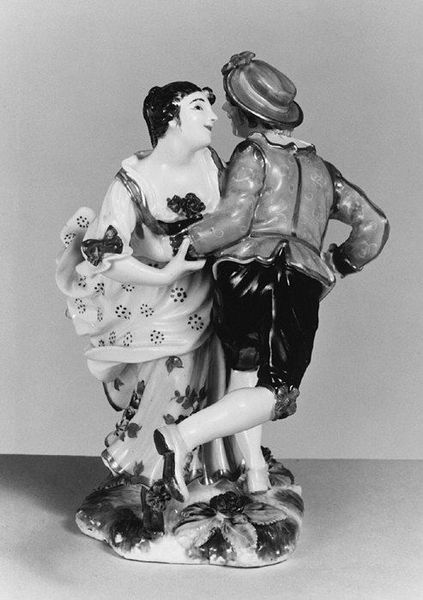
ceramic, porcelain, sculpture
#
sculpture
#
ceramic
#
porcelain
#
figuration
#
sculpture
#
group-portraits
#
genre-painting
#
monochrome
#
decorative-art
#
rococo
#
monochrome
Dimensions: 6 7/8 × 7 5/16 in. (17.5 × 18.6 cm)
Copyright: Public Domain
Curator: Well, that's utterly charming. It reminds me of a whispered secret at a garden party, all delicate and slightly frivolous. Editor: That's one way to see it! What we're looking at is a porcelain sculpture called "Seated Couple", made between 1760 and 1765 by the Höchst Manufactory. It's currently housed right here at the Metropolitan Museum of Art. Curator: Ah, Höchst! Masters of Rococo sweetness, weren't they? Just look at the details, the floral patterns on the woman’s dress, the languid pose of the man. It's a tiny stage set for aristocratic flirtation. I wonder, did they always look so pristine? I find the monochromatic aspect unusual... perhaps it was once much brighter. Editor: Color's absence is rather fascinating in this medium, don't you think? It kind of spotlights the technical mastery required to pull something this nuanced from clay and fire. No distractions! I can only imagine, it gives the piece this uncanny sense of removed elegance, as if spying on the ghosts of an era. Curator: Exactly! Think of the social context too. Porcelain figures like these weren't just pretty trinkets. They were status symbols. Having pieces like this declared your wealth, your taste. In the 18th century, possession was often so obviously performative. Editor: So it's basically conspicuous consumption distilled into adorable porcelain? Fair enough, but doesn’t this "cuteness" conceal some other realities? Look closer, notice how the couple sits a little separated; there is an awkwardness and, perhaps, something not openly stated at all. It could even be quite an intriguing little critique. Curator: Critique or complicity? These kinds of items served as propaganda as much as decoration. I wouldn't be surprised if such pieces, through visual harmony and humor, functioned as conversation-starters in political and aristocratic salons, promoting a specific kind of ideal or allegiance, masking the social inequality of the time. Editor: Interesting thoughts indeed. It's astonishing to consider how such delicate figures once danced attendance in rooms filled with so much historical weight, like miniature actors on a much grander stage, speaking volumes.
Comments
No comments
Be the first to comment and join the conversation on the ultimate creative platform.
